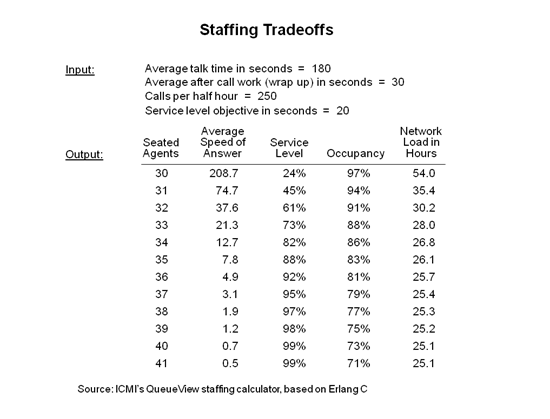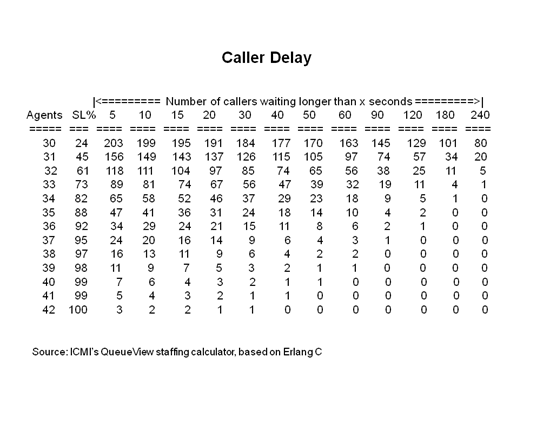By
Brad Cleveland
|
Date Published: November 03, 2011 - Last Updated August 22, 2018
|
Comments (2)
Because of the randomly arriving nature of customer contact, just one person on or off the contact center floor can have a huge impact. Brad Cleveland looks at the reality of forecasting and scheduling for an effective, responsive organization.
The central reality that shapes contact center operations is that they are dynamic in the truest sense. In any center that handles contacts from customers, workloads arrive randomly, the result of decisions made by callers who are motivated by a myriad of needs and conditions. ICMI has always put it, calls bunch up!
Sure, good forecasts will identify repeating calling patterns. For example, most call centers have predictable patterns by seasonality (time of year), day of the week, and time of day. But, what we can’t predict is how many contacts in any given half-hour or hour will arrive within the first minute, the second minute and so forth.
An important implication of random call arrival is that staffing must be calculated by using either a queuing formula that takes random call arrival into account (typically Erlang C) or a computer simulation program that accurately models this reality.
Here, I'm using a program based on the widely used Erlang C formula. For this example, I plugged in 250 calls that have 180 seconds or 3 minutes talk time and 30 seconds of after call work. And... wow... look at the impact of different staffing levels!

As you can see, 30 agents will provide a service level of 24 percent in 20 seconds. With 31 agents, things improve dramatically. Service level jumps to 45 percent, a huge improvement. Adding one more person yields another big improvement. In fact, adding only four or five people takes service level from the depths of poor service to something a lot more acceptable to callers.
When service level is low, occupancy is high, and wait times are long. And, the load on your telecom network will be significant (reason: your call routing system has to put all of those queued calls in a holding pattern – kind of like putting landing aircraft in a holding pattern over a busy airport).
Let's look at the same numbers through a different lens. This is my favorite way to look at this because it really shows what’s happening to our customers at different staffing levels.

If we have 34 agents handling calls, 65 callers are waiting five seconds or longer. Then we answer seven of them in the next five seconds, so 58 are still waiting ten seconds or longer. Then we answer another six, so 52 are waiting 15 seconds or longer, and so forth. There's still one person waiting 180 seconds, and nobody waits more than four minutes. It's a very different story, however, if there are only 30 agents handling calls. Dozens of callers are waiting four minutes or longer. The results look far better with even one additional agent. As you can see, this relationship between staff and service level is not linear – it's exponential.
That's the power of one! Every person has a significant positive impact on service levels. And that in turn is an important enabler to delivering great customer experiences, boosting loyalty and contributing to successful business results.
In sum, I encourage you to make accurate forecasts and schedules a priority. Set realistic expectations for schedule adherence, or when each person should be available to handle the workload. And train every person on the team on the incredible impact they have – the Power of One!